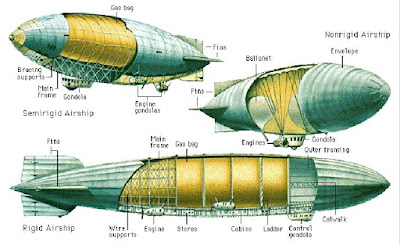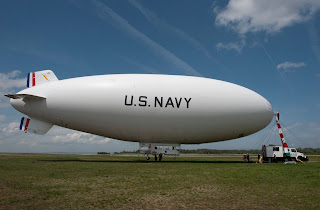This past Tuesday I wrote about the flight of the world’s first airliner — the LZ-7 Deutschland.
That post was a prelude to a series I'll be writing throughout the rest of the year chronicling the triumphs of the rigid airship. More commonly known as the zeppelin, after Count Ferdinand von Zeppelin who built the first successful rigid airship.
Airship Types
There are three types of airship. Here is a diagram:
The earliest type was non-rigid, what we call a blimp today. There is no framework to maintain the shape of the envelope. The shape is maintained by gas pressure.
The second type of airship is the semi-rigid, like the new Zeppelin NT. The semi-rigid has a frame to maintains the length. Gas pressure maintains the width.
The third type is the rigid airship. The shape of the envelope is held in place by a framework. The lift gas is contained in bags (called cells) within the framework.
Why The Rigid Airship Is Better
The problem with non-rigid and semi-rigid airships is that they cannot be built large enough to be commercially viable. Blimps proved of value in anti-submarine warfare in World War II, but they and semi-rigids can’t carry sufficient cargo to be of large scale commercial use. The new semi-rigid Zeppelin NTs are basically used for advertising and sightseeing excursions.
The rigid airship solves the problem. The frame provides shape and strength and can be scaled up as large as the vessel needs to be. The rigid airship made the dream of long-range strategic bombing and intercontinental flight a reality.
Tomorrow is a double anniversary: the first flight of the first zeppelin and the start of the first east-west crossing of the Atlantic by air and the first round trip trans-Atlantic flight by an aircraft. An auspicious day indeed!
So get a glass of bubbly ready. Tomorrow we party!
Comments are always welcome. Until next time, happy reading!




No comments:
Post a Comment